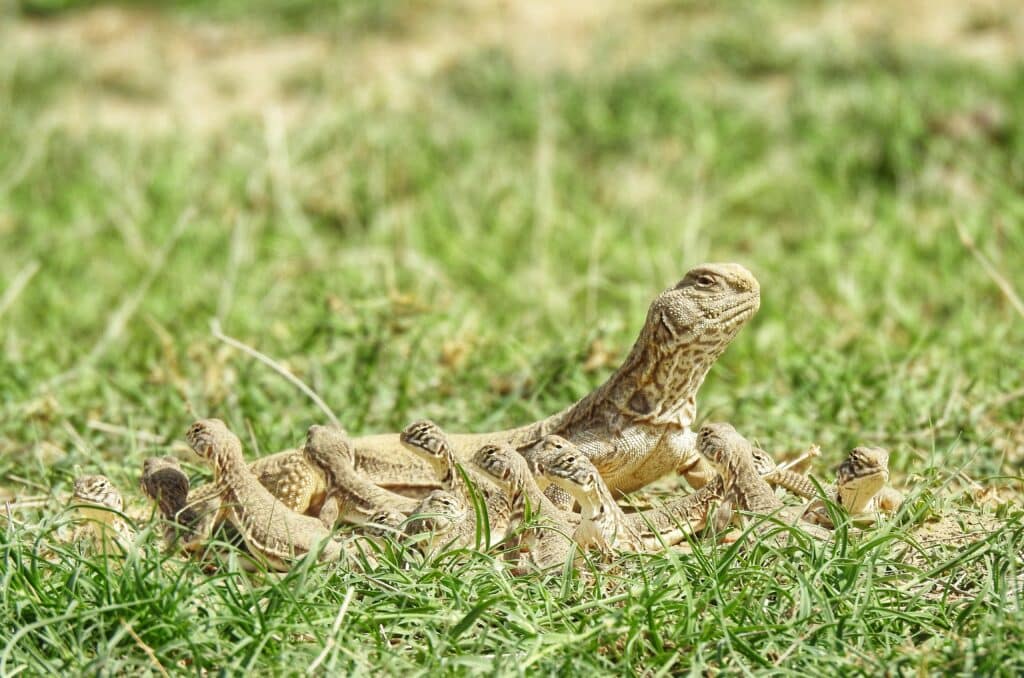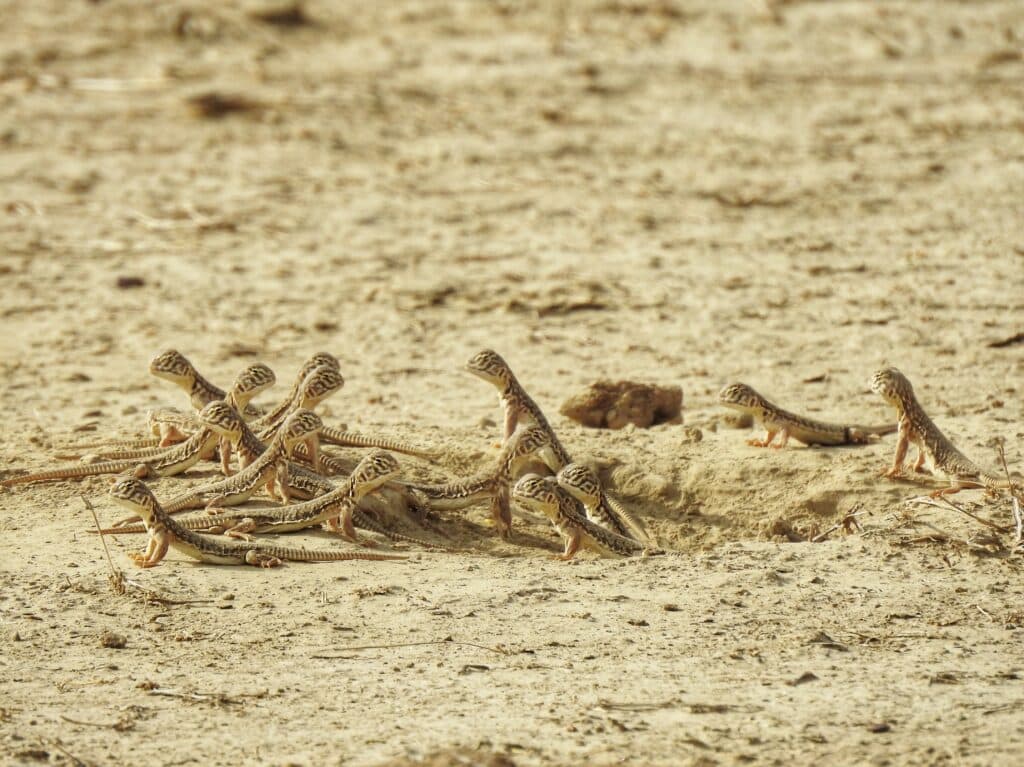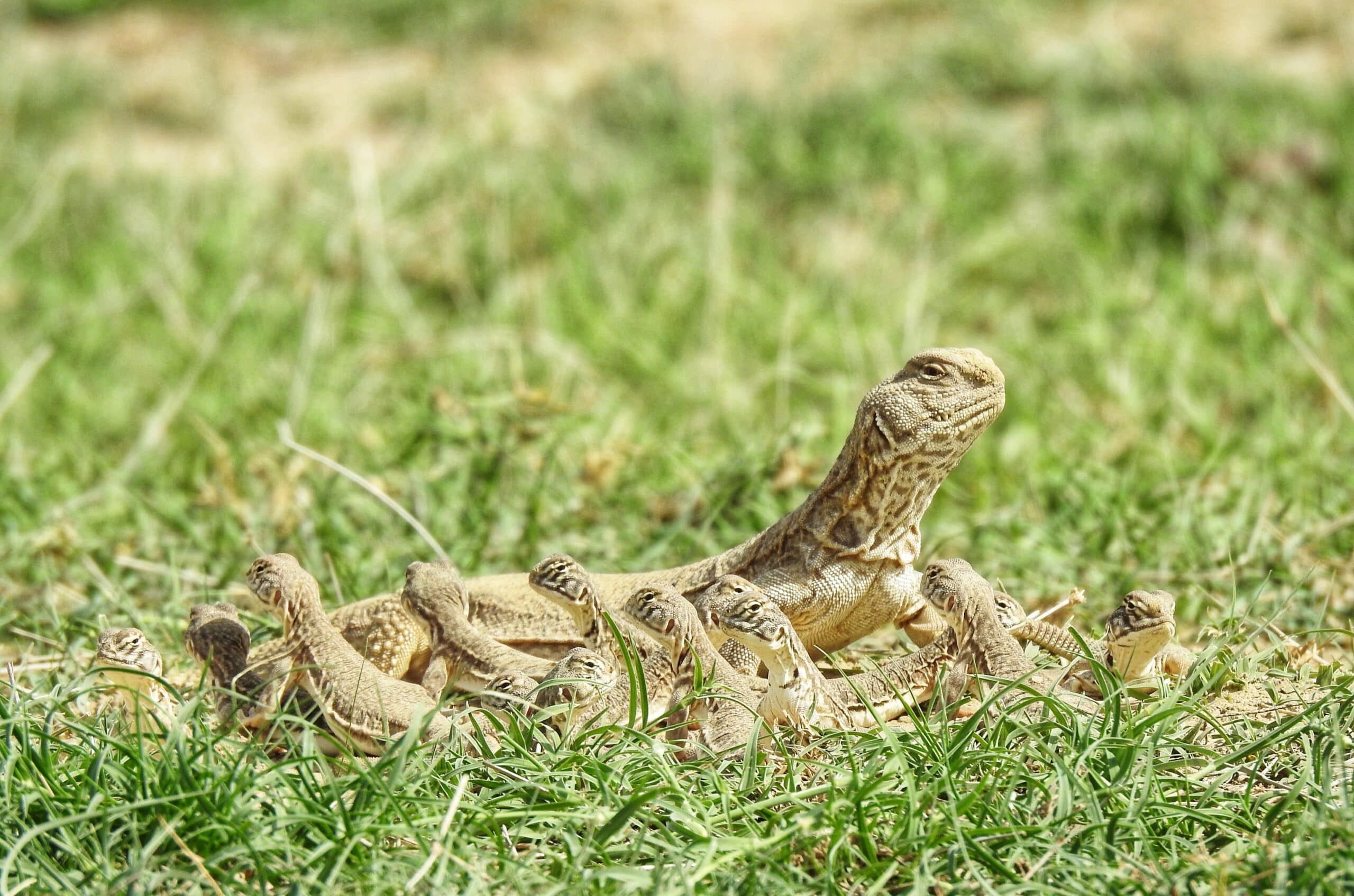A stampede started as soon as our Bolero reached the site selected for rainwater harvesting. After much panic, all of them retreated into their burrows.
The stampede was made up of a large group of baby and adult spiny-tailed lizards (Saara hardwickii), referred to as sandho by the people of Kutch. I was casually accompanying our engineer “Karshanji” and social worker “Bharti ben” to this site before we went to check the restoration plots.
Jhimri Vaandh, a hamlet in the Banni Grasslands of Kutch, is known for its slopes and depressions, making it one hell of a site for potential rainwater harvesting. Since they’re located in such arid regions of the country, the semi-nomadic communities in the Banni prepare for their water needs at least a year before, defining all migration routes in case a drought strikes and they need to move during the lean season.
This specific community had invited us to help them to construct a pond for their village, and Karshanji had done his due diligence from a slope, depression, catchment, and outlet point of view. A commitment was made: they would build the pond at this location.
Once we reached the site, a JCB machine – a type of mechanical excavator – arrived. We knew villagers were coming soon after with a coconut to break and present an offering to God before kick-starting the pond-making process.
A thought suddenly worried me. “Where is the site for the pond?” I exclaimed.
“Where you are standing right now!” Karshanji replied.
My heart skipped a beat and my face grew pale. “NO WAY!” I shrieked. “How did you do the site selection? Didn’t you see the number of sandho burrows?”

Adult sandhos keep watch as groups of their young explore their neighbourhood of burrows. Photo courtesy of Ritesh Pokar.
Karshanji said that the site was checked a month before, but now, it was the season where they come out and the burrows become active. These spiny-tailed lizards are herbivorous reptiles found mainly in the Thar Desert and Kutch district of Western India. They emerge during the late spring after a long winter hibernation, living in colonies with many burrows in one area. Their neighbourhoods are friendly, but they are very particular about their space and are quick to chase trespassing outsider sandhos away. Since they are diurnal, they were having a day party before we arrived.
With excited villagers gathering around the JCB, my fear had no bounds. The sandho already face the perils of development and are now confined to a much smaller region, all because of the conversion of soft soil desert and grasslands into so-called “productive land.” Along with losing its habitat, the species is a victim of illegal wildlife trade and hunting for its fatty tail and meat, placing it under Schedule II of the Wildlife Protection Act of India and causing the IUCN to list it under the Vulnerable category. Letting another threat come to them was the last thing I wanted.
I gathered the courage to go and inform Bharti ben about this looming catastrophe. She is a very gentle and kind-hearted woman whose 20 years of social work have made her a leader and a change-maker. She immediately understood my worry and took charge.
Women in the field of conservation have a way of getting things done – it does not come from power or boss culture, but strategy and humility. I witnessed it on that day. Bharti ben went ahead to the President of the Committee in the village, who had the coconut in his hand, and said softly, “Bhai, I made a mistake. I failed to monitor the field and my team missed approximately 50 homes of sandho.”
She used sentimental words in Kutchi, like “Sandho jo darr aye” (this is home of the Sandho) and “Sandho asanje kutch ja e, hee be keday nato milay” (Sandho are found only in Kutch and there are not many places where they make their home).
The president and other villagers tried to talk us out of stopping the project by saying that once the JCB starts, the sandhos will move out and relocate, or reminding us about the potential of the site. We did not budge.
During the chaos, I sneaked a peek at the village toddlers that were playing with juvenile spiny-tailed lizards. The adult sandhos were chomping on the fine grasses of Elucine spp, Cyperus rotundus, Echinochloa colona, and more. They were all totally aloof and unaware of the agitation among us.

Baby sandhos strategising during their day out in the grasslands of Banni, Kutch. Photo courtesy of Ritesh Pokar.
After almost an hour of back and forth, from emotional argumentation to sharing all the findings from our research, the villagers suggested an alternative site.
We were overjoyed by the outcome, but Bharti ben did make sure to tell us that “you conservationists need to ensure that you visit the engineers and social team wherever any work is happening to make your ecological assessment before any decision is made.” She was right – it was an important lesson for the future.
The sandhos have no idea about the emotional day we had, but what a collective decision!


